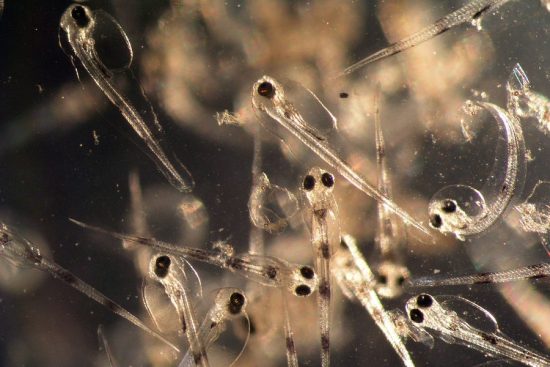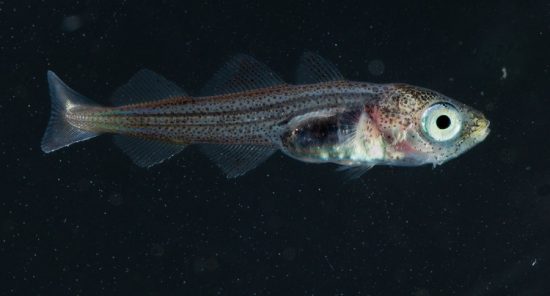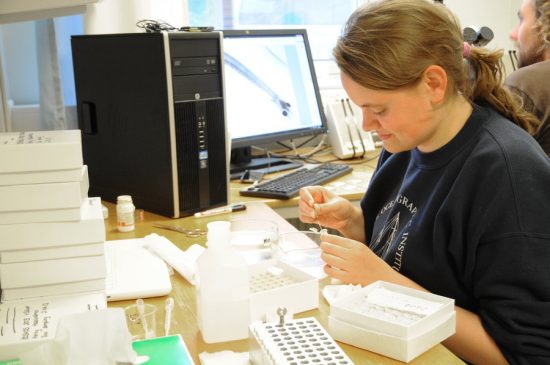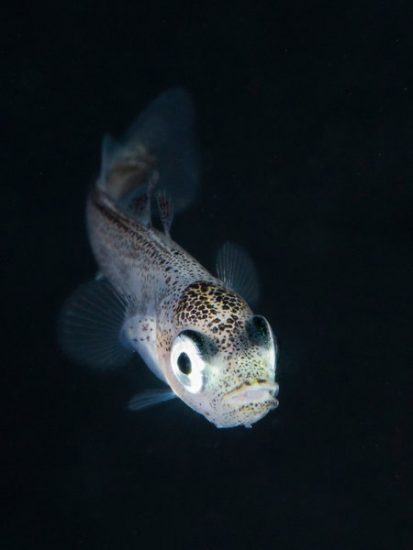





Population of cod has come into increasing pressure
The increased acidification of the ocean may lead to twice as many
newly-hatched cod larvae to perish, placing this economically valuable
fish stock under increasing pressure. This finding was reached after
two experiments lasting several weeks conducted by members of the
German research network BIOACID.
The population of cod has come into increasing pressure for the past
decades, and this is a cause for concern as it is one of the most
important commercial fishes in the North Atlantic. Its population has
been drastically reduced and faces collapse (as we have reported here).
Indeed, overfishing has caused cod stocks to collapse several times in
the past.
Now, a recent article in the online journal PloS ONE cites
another major stressor faced by the cod population: ocean
acidification. This is because as additional atmospheric carbon dioxide
dissolves in the ocean, it causes the seawater to become more
acidified, leading to negative consequences for the development,
behaviour and growth of fish larvae.
The results of two separate experiments conducted in Sweden and Norway
showed that the mortality of cod larvae during the critical period
between the hatching and the development of the gills was twice as high
at elevated carbon dioxide concentrations as at current conditions.
In the first experiment, fertilised eggs and cod larvae caught in the
Öresund were kept in the laboratory at the Sven Lovén Centre at the
University of Gothenburg in Sweden for six weeks. All were exposed to
the same temperature, light conditions and food densities compatible
with natural conditions. The difference was that some were held in
seawater at ambient carbon dioxide concentrations, while others were
exposed to carbon dioxide concentrations projected for 2100.
As for the second experiment, it was conducted at the Centre for Marine
Aquaculture Tromso, NOFIMA (Norway) with cod offspring from the Barents
Sea.
“Even though the experiments were conducted in two consecutive years at
different research stations under different conditions in relation for
example to food or tank sizes and with two different stocks, their
results are surprisingly similar,” said lead author Martina Stiasny in
German. She is a PhD student at GEOMAR Helmholtz Centre for Ocean
Research Kiel.
“The daily mortality rate for cod from the Öresund under current
conditions was nine per cent compared to 20 percent under increased
carbon dioxide concentrations. For the Barents Sea stock, we found
mortality rates of seven and 13 percent respectively.”
Taking into consideration the increased mortality rates into their
model calculations (which were based on inventory data of the
International Council of the Exploration of the Sea (ICES), the
researchers then determined the number of cod offspring that would
enter the population. Based on their scenarios, ocean acidification may
cause a drop of a quarter to one-twelfth of the current numbers.
“Our results show for the first time how ocean acidification can add up
to the fishing pressure on stocks of a commercially important fish
species,” said Dr Catriona Clemmesen, head of the GEOMAR working group
Larval Fish Ecology.
“The repercussions of the anthropogenic climate
change need to be included into stock projections and considered in the
management of fish stocks. Only this will enable us to define realistic
limits for fishing pressure and to avoid overfishing and depletion of
fish stocks.”
According to Stiasny, fisheries would need to adjust to climate change
to retain their fish stocks, as ocean acidification could not be
avoided anymore. However, she added that “the bigger the stocks are and
the more responsibility and sustainably the fishing activities are, the
larger would be the larvae repopulation. This will in the long run not
only allow for larger fisheries, but also helps stocks to better adapt
to climate change and other anthropogenic influences.“
Link to study
 Mares
Mares 27th August 2016
27th August 2016